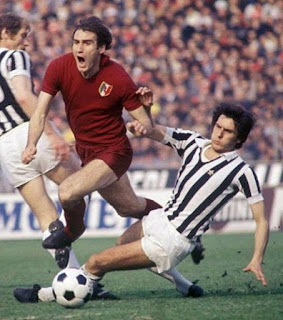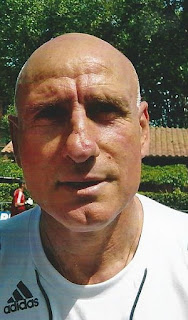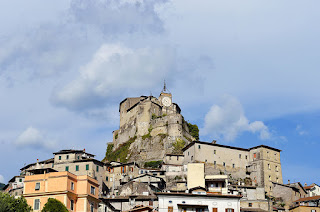Italy international who was twice world's costliest goalkeeper
 |
| Angelo Peruzzi won every major prize in club football during his years with Juventus |
Peruzzi defied his relatively short and stocky physique to become one of the best goalkeepers of his generation, renowned not only for his physical strength but also for his positional sense, anticipation and explosive reactions.
These qualities enabled him to compensate for his lack of height and earned him a reputation for efficiency rather than spectacular stops yet he was much coveted by clubs in Italy’s Serie A.
Twice he moved clubs for what was at the time a world record transfer fee for a goalkeeper. In 1999 he joined Internazionale of Milan (Inter Milan) from Juventus for €14.461 million but stayed at the Stadio Giuseppe Meazza for only a year before switching to Lazio in a deal worth €20.658 million.
That record stood for 11 years until Manchester United bought David de Gea from Atletico Madrid for €22 million in 2011.
His value was based on his outstanding record over eight seasons with Juventus, with whom he won every major medal on offer to a club footballer in Italy, including three Serie A titles, the Coppa Italia and the Supercoppa (twice), as well as the Champions League, the UEFA Cup, the UEFA Super Cup and the Intercontinental Cup.
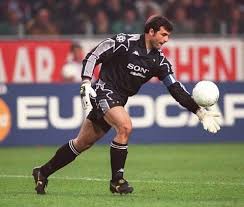 |
| Peruzzi was twice the most expensive goalkeeper in football history |
Even as a young player in the Roma youth system, Peruzzi struggled with his weight. Former teammates recalled him keeping salami, sandwiches and sweets hidden in his locker to satisfy an enormous appetite.
Nonetheless, his qualities as a goalkeeper stood out. He made his Serie A debut in 1987 at the age of 17 and when Roma sent him on loan to Hellas Verona for the 1989-90 he returned with glowing reports.
However, his weight remained an issue and his decision to take an appetite suppressant in the hope of shedding some pounds quickly backfired on him spectacularly when a doping test produced a positive result for the banned substance Phentermine.
He was banned for a year and Roma were happy to let him go when Juventus offered him a contract. It proved to be the Turin club’s gain as Peruzzi soon replaced Stefano Tacconi as the club’s No 1 goalkeeper and became one of their most reliable performers, never more so than in the Champions League final of 1996 against Ajax, when his two saves in the penalty shoot-out ensured that the trophy went to Juventus.
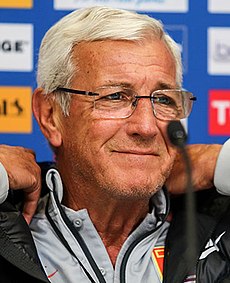 |
| Head coach Marcello Lippi picked Peruzzi as his No 2 'keeper for the 2006 World Cup |
Although his two big-money transfers were lucrative for Peruzzi personally in signing-on fees and contracts, he did not enjoy the success with Inter or Lazio that he had tasted with Juventus. He made more than 200 appearances for Lazio over seven seasons but a Supercoppa Italiano medal in his first season and a Coppa Italia in 2004 were his only tangible honours.
Peruzzi earned his first call-up to the Italy national team under coach Arrigo Sacchi in 1995, having been a member of the Italy squad at the 1992 Olympics in Barcelona. He was the first-choice stopper at Euro ‘96 in England, where Italy did not progress beyond the group stages, and would have gone to the World Cup in France in 1998 as number one goalkeeper had he not suffered an injury before the tournament.
By the time the next World Cup came around, Peruzzi had fallen behind Gianluigi Buffon and Francesco Toldo in the pecking order and was not considered for the 2002 finals.
It was only when Marcello Lippi, one of his former coaches at Juventus, took charge of the national team in 2004 that he came back into favour. He kept goal for two of the qualifying matches ahead of the 2006 World Cup in Germany and went to the finals as number two behind Buffon. He never made it off the bench but nonetheless received a medal as a member of the winning squad after the azzurri defeated France on penalties in the final.
Three times awarded the Goalkeeper of the Year title in Serie A, Peruzzi retired as a player in 2008 and embarked on a career in coaching. He immediately found a position among the technical staff at Italy’s national coaching centre at Coverciano before becoming assistant to Under-21 head coaches Ciro Ferrara and Pierluigi Casiraghi.
Ferrara gave him his first club job as assistant head coach at Sampdoria and he is now back in Rome as team co-ordinator with Lazio.
 |
| The town of Blera sits on top of a rocky ridge in northern Lazio, some 78km (48 miles) north of Rome |
Angelo Peruzzi’s hometown of Blera, situated some 24km (15 miles) southwest of the city of Viterbo in northern Lazio and around 78km (48 miles) northwest of Rome, sits on a narrow tongue of rock between two deep gorges. Its origins go back to Etruscan times, although its history suggests it was of little importance except for a stopping-off point on the Via Clodia, which linked the more important towns of Pitigliano and Sorano. Some of the Etruscan settlement’s walls still remain intact.
Stay in Blera with Booking.com
 |
| The Stadio Olimpico in Rome is home to both Lazio and Roma and hosts many important football matches |
Although the Stadio Olimpico, where both Lazio and Roma play their home games, was opened in 1937, it did not become the Olympic Stadium until Italy had won the right to stage the Games in 1960. Originally, as part of Mussolini’s ambitious Foro Mussolini (later Foro Italico) complex, it was called the Stadio dei Cipressi. When its capacity was increased to 100,000 in the 1950s, it became the Stadio dei Centomila. Nowadays it has seats for 70,634 spectators and is owned by the Italian National Olympic Committee but is used primarily as a venue for football matches, having been refurbished for the 1990 World Cup finals. It has been the venue for the European Cup and Champions League finals on four occasions.
More reading
Marco Tardelli and the image that defined Italy's 1982 World Cup victory
Also on this day:
1740: The birth of type designer Giambattista Bodoni
1918: The birth of designer Achille Castigleoni
1935: The birth of vocalist Edda Dell'Orso
1979: The birth of motorcycling world champion Valentino Rossi
Also on this day:
1740: The birth of type designer Giambattista Bodoni
1918: The birth of designer Achille Castigleoni
1935: The birth of vocalist Edda Dell'Orso
1979: The birth of motorcycling world champion Valentino Rossi
(Picture credits: Blera by Robin Iversen Rönnlund; Stadio Olimpico by Andrew; via Wikimedia Commons)


